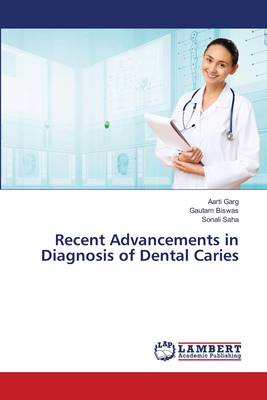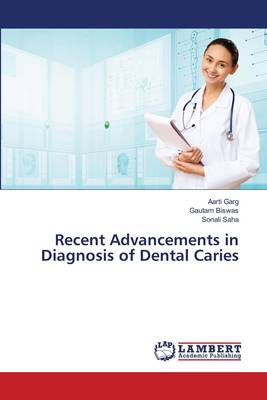
- Afhalen na 1 uur in een winkel met voorraad
- Gratis thuislevering in België vanaf € 30
- Ruim aanbod met 7 miljoen producten
- Afhalen na 1 uur in een winkel met voorraad
- Gratis thuislevering in België vanaf € 30
- Ruim aanbod met 7 miljoen producten
Zoeken
Recent Advancements in Diagnosis of Dental Caries
Aarti Garg, Gautam Biswas, Sonali Saha
Paperback | Engels
€ 49,95
+ 99 punten
Omschrijving
Dental caries is easily diagnosed but there is considerable difficulty in deciding the earliest stage in the progression of a carious lesion at which diagnosis can be made without reasonable doubt. Early detection and diagnosis allow the dentist to counsel and assist patients to prevent the progression of caries and thereby avert the need of invasive, irreversible removal and restoration of tooth structure.In recent years, various techniques have been explored to address the need for better detection tools to aid dentist in the diagnosis of early caries and several of these methods have been developed into commercial product. Thus the new era of dental world has provided us with newer techniques like Digital Radiography, Diagnodent, Optical Coherence Tomography, Terahertz Imaging etc. with the advantages of more reliable, accurate, sensitive, specific and inter & intra examiner accuracy. By utilizing the most conservative, reliable diagnostic methods to detect true carious lesions, the dental professional can enhance the predictability of preventive methods to control the caries process and ultimately further reduce the need for restorative treatment.
Specificaties
Betrokkenen
- Auteur(s):
- Uitgeverij:
Inhoud
- Aantal bladzijden:
- 84
- Taal:
- Engels
Eigenschappen
- Productcode (EAN):
- 9783659155208
- Verschijningsdatum:
- 3/03/2014
- Uitvoering:
- Paperback
- Afmetingen:
- 150 mm x 220 mm
- Gewicht:
- 128 g

Alleen bij Standaard Boekhandel
+ 99 punten op je klantenkaart van Standaard Boekhandel
Beoordelingen
We publiceren alleen reviews die voldoen aan de voorwaarden voor reviews. Bekijk onze voorwaarden voor reviews.








